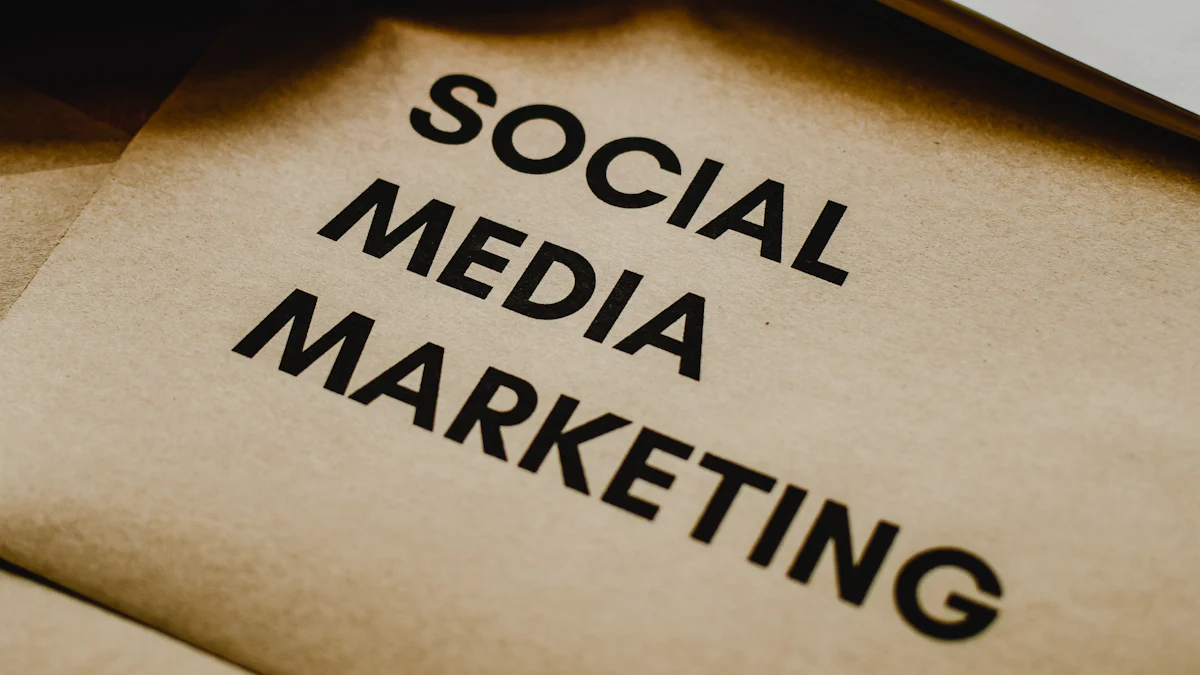Understanding Whitelisting Fees for Influencers

In the world of social media, whitelisting has become a buzzword. But what is whitelisting in social media? It's when brands gain permission to use an influencer's account to run ads. This strategy allows brands to tap into the influencer's audience, enhancing authenticity and reach. Social media whitelisting fees come into play here. Influencers charge brands for this access, which can range from a flat fee to a percentage of ad spend. With whitelisting, both parties benefit—brands get targeted exposure, while influencers enjoy increased engagement and potential revenue.
What is Whitelisting in Social Media?

Definition and Explanation
Whitelisting in social media is a powerful tool for both influencers and brands. But what exactly does it mean? Simply put, whitelisting allows brands to use an influencer's account to run ads. This means the brand can promote content directly through the influencer's social media profile. By doing so, brands can reach the influencer's audience in a more authentic way.
Influencer Hero, an expert in influencer marketing, describes whitelisting as a win-win strategy. It lets influencers gain exposure and increase their follower base through the brand’s ad spend. Brands, on the other hand, leverage the influencer’s content and audience for better performance.
How Whitelisting Works
So, how does whitelisting work? When you whitelist, you give a brand permission to access your social media account for advertising purposes. The brand can then create ads that appear as if they are coming from your account. This approach enhances the authenticity of the ads, making them more appealing to your followers.
Shopify, a leader in e-commerce, highlights that whitelisting offers flexibility. Brands can test different ad versions and make data-informed decisions. This results in better targeting and increased revenue.
Common Platforms for Whitelisting
You might wonder where whitelisting happens. The most common platforms include Instagram, Facebook, and TikTok. These platforms offer tools that make it easy for influencers to grant access to brands. By using these tools, you can manage permissions and ensure that your content aligns with your brand values.
Differences Between Whitelisting and Other Collaborations
Whitelisting vs. Sponsored Posts
You might think whitelisting is similar to sponsored posts, but there are key differences. In a sponsored post, you create content for a brand and share it on your account. The brand pays you for this exposure. With whitelisting, the brand uses your account to run ads, which can reach a broader audience. This method often results in higher engagement and better performance.
Whitelisting vs. Affiliate Marketing
Affiliate marketing is another popular collaboration method. Here, you promote a brand's products and earn a commission on sales generated through your unique link. Unlike whitelisting, affiliate marketing relies on direct sales rather than ad exposure. Whitelisting focuses on enhancing brand visibility and engagement through targeted ads.
The Cirqle, a creator marketing expert, explains that whitelisting allows brands to use a creator's content with their own advertising strategies. This differs from allowlisting, which centers on creator-centric ads.
Understanding what is whitelisting in social media can open new opportunities for you as an influencer. By leveraging this strategy, you can enhance your reach and collaborate more effectively with brands.
Benefits and Risks for Influencers
Exploring the world of influencer whitelisting can open up exciting opportunities for you. But like any strategy, it comes with its own set of benefits and risks. Let's dive into what you can gain and what you should watch out for.
Benefits of Influencer Whitelisting
Increased Exposure and Reach
One of the biggest benefits of whitelisting is the increased reach it offers. When brands use your account to run ads, they tap into your audience and beyond. This means more eyes on your content and potentially more followers. It's like having a megaphone that amplifies your voice across social media platforms.
Potential for Additional Revenue
Whitelisting can also boost your income. By charging brands for access to your account, you create a new revenue stream. Whether you opt for a flat fee or a percentage of the ad spend, this strategy can significantly enhance your earnings. It's a win-win situation where you provide value and get compensated for it.
Risks of Whitelisting
Loss of Control Over Content
While the benefits are enticing, whitelisting risks should not be overlooked. One major concern is the loss of control over your content. When brands run ads from your account, they might tweak the messaging or visuals. This can sometimes lead to content that doesn't fully align with your style or voice.
Potential Brand Misalignment
Another risk involves brand misalignment. Not every brand will perfectly match your values or audience. If a brand's message clashes with your personal brand, it could confuse or alienate your followers. It's crucial to carefully vet brands before granting them access to ensure they resonate with your audience.
Navigating the world of social media whitelisting requires a balanced approach. By understanding both the benefits and risks, you can make informed decisions that enhance your influence while protecting your brand integrity.
How to Set Whitelisting Fees

Setting the right whitelisting fees can feel like a puzzle. You want to ensure you're fairly compensated while remaining attractive to brands. Let's break down the factors that influence your fee structure and explore different pricing models and strategies.
Factors Influencing Fee Structure
Audience Size and Engagement
Your audience size plays a big role in determining your whitelisting fees. Brands often look at how many followers you have and how engaged they are with your content. A larger, more engaged audience can command higher fees. Brands see this as a chance to reach more potential customers, so they’re willing to pay more for that exposure.
Content Quality and Niche
The quality of your content and your niche also impact your fees. High-quality content that resonates with your audience can justify higher fees. If you operate in a niche market, you might attract brands looking for targeted audiences. This specificity can allow you to charge more, as brands value the direct connection to their desired demographic.
Pricing Models and Strategies
Flat Fee vs. Percentage of Ad Spend
When it comes to pricing models, you have options. Some influencers prefer a flat fee for their whitelisting services. This approach provides a clear, upfront cost for brands. Others opt for a percentage of the ad spend. This model aligns your earnings with the campaign's success, potentially increasing your revenue if the ads perform well.
Influencer Hero notes that combining a flat fee with a percentage of ad spend can be an effective strategy. It ensures you receive a base payment while benefiting from successful campaigns.
Negotiation Tips for Influencers
Negotiating your fees can be tricky, but it's essential. Start by understanding the brand's budget and goals. Use your audience insights and past campaign successes as leverage. Highlight the value you bring to the table. Be open to discussing different pricing models, and don't hesitate to use whitelisting as a bargaining chip for higher compensation. Remember, flexibility can lead to better deals.
Setting your social media whitelisting fees involves balancing various factors. By considering your audience, content quality, and choosing the right pricing model, you can create a strategy that benefits both you and the brands you collaborate with.
Managing Whitelisting Permissions
Navigating the world of social media whitelisting involves more than just setting fees. You also need to manage whitelisting permissions effectively. This ensures that your brand remains protected while collaborating with others.
Granting Access to Brands
When you decide to grant access to brands, it's crucial to use the right platforms and tools. These tools help you manage permissions efficiently and maintain control over your account.
Platforms and Tools for Permission Management
Several platforms offer built-in tools to manage whitelisting permissions. Instagram, Facebook, and TikTok provide features that allow you to grant and revoke access easily. These tools ensure that brands can only use your account for approved purposes. By using these platforms, you can monitor who has access and what they can do with your account.
Application Whitelisting solutions in IT security emphasize the importance of having a comprehensive inventory of applications. Similarly, in social media, knowing which brands have access to your account is vital. This knowledge helps you maintain control and prevent unauthorized use.
Setting Boundaries and Conditions
Setting clear boundaries and conditions is essential when granting access. You should outline what brands can and cannot do with your account. Specify the type of content they can promote and any restrictions on messaging or visuals. By doing this, you protect your brand's integrity and ensure that all whitelisted content aligns with your values.
Monitoring and Reviewing Whitelisted Content
Once you've granted access, it's important to keep an eye on the content being promoted. Regular monitoring helps you ensure that everything aligns with your brand and audience expectations.
Ensuring Brand Alignment
To maintain brand alignment, review all whitelisted content regularly. Check that the messaging and visuals match your style and voice. If you notice any discrepancies, address them immediately with the brand. This proactive approach helps you maintain a consistent brand image across all platforms.
Application Whitelisting in cybersecurity highlights the importance of strict control over what can run on systems. Similarly, in social media, you need to control what appears on your account to prevent brand misalignment.
Handling Disputes and Issues
Disputes and issues may arise during collaborations. When this happens, address them promptly and professionally. Communicate openly with the brand to resolve any misunderstandings. If necessary, adjust the terms of your agreement to prevent future conflicts. By handling disputes effectively, you maintain positive relationships and protect your brand.
Managing whitelisting permissions requires careful planning and oversight. By using the right tools and setting clear boundaries, you can collaborate with brands while safeguarding your brand's reputation.
Understanding whitelisting is crucial for influencers like you. It offers a proactive approach to managing your social media collaborations. By allowing only trusted brands to access your account, you can enhance security and maintain control over your content. As you consider influencer whitelisting, weigh the benefits against potential risks. This strategy can boost your exposure and revenue, but it requires careful management. Set your fees wisely, considering factors like audience size and engagement. Always ensure that the brands you collaborate with align with your values. This way, you can maximize the advantages while safeguarding your brand integrity.
FAQ
What is influencer whitelisting?
Influencer whitelisting involves granting a brand permission to run ads using your social media profiles. This means the brand can use your account to promote content, reaching your audience directly. It's a popular strategy in influencer marketing, allowing brands to leverage your influence for their advertising campaigns.
How does influencer whitelisting differ from other influencer partnerships?
In traditional influencer partnerships, you create and share content on behalf of a brand. With whitelisting, the brand uses your profile to run ads, which can include boosting existing posts or creating new ones. This approach offers brands more control over content promotion while still benefiting from your established audience.
Are there additional fees involved in influencer whitelisting?
Yes, influencers typically charge additional fees for whitelisting services. These fees can vary based on factors like audience size, engagement, and the scope of the campaign. You might choose a flat fee or a percentage of the ad spend as your pricing model.
What should I consider when setting whitelisting terms?
When setting whitelisting terms, consider your audience's size and engagement, the quality of your content, and your niche. These factors can influence your fee structure. Also, ensure that the brand's values align with yours to maintain authenticity and trust with your followers.
How can whitelisting enhance my influencer marketing strategy?
Whitelisting can significantly boost your influencer marketing strategy by increasing your reach and engagement. Brands can target specific audiences more effectively, leading to better campaign performance. This collaboration can also open up new revenue streams for you as an influencer.
What platforms support influencer whitelisting?
Common platforms for influencer whitelisting include Instagram, Facebook, and TikTok. These platforms offer tools to manage permissions and ensure that brands can only use your account for approved purposes.
How do I maintain control over my content during whitelisting?
To maintain control, set clear boundaries and conditions with the brand. Specify what content they can promote and any restrictions on messaging or visuals. Regularly review whitelisted content to ensure it aligns with your brand and audience expectations.
Can whitelisting lead to brand misalignment?
Yes, there's a risk of brand misalignment if the brand's message doesn't match your values or audience. Carefully vet brands before granting access to ensure they resonate with your followers. This step helps maintain your brand integrity.
How do I handle disputes or issues with whitelisting?
Address disputes promptly and professionally. Communicate openly with the brand to resolve misunderstandings. If necessary, adjust the terms of your agreement to prevent future conflicts. Effective handling of disputes helps maintain positive relationships and protect your brand.
Is whitelisting suitable for all influencers?
Whitelisting can be beneficial for many influencers, but it's not suitable for everyone. Consider your audience, content style, and personal brand before deciding. Weigh the potential benefits against the risks to determine if it's the right fit for you.
See Also
Ultimate Resource For Achieving Influencer Whitelisting Success
Deciding On Influencers Versus Brand Ambassadors
Advantages And Disadvantages Of TikTok Influencer Promotions
Understanding The Distinctions Between Brand Ambassadors And Influencers
